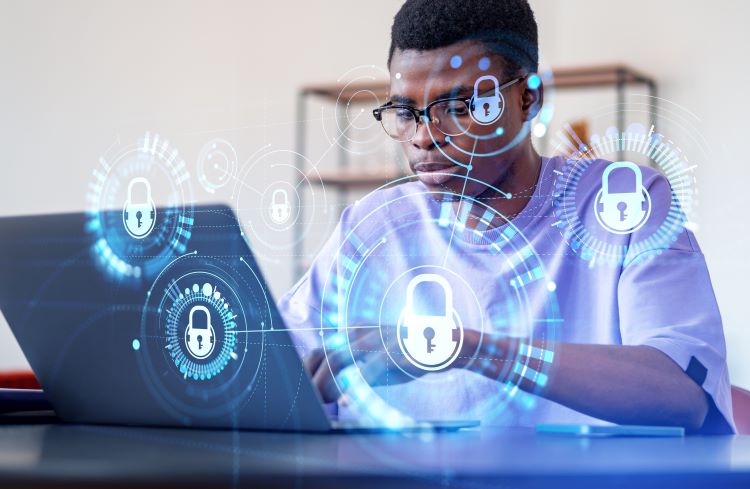Securing the Digital Classroom: Cyber Safety Measures for Students
Securing the Digital Classroom: Cyber Safety Measures for Students

In the digital era, education has undergone a significant transformation, with online learning becoming more prevalent than ever before. However, with this shift comes the need to address the growing concern of cyber threats that students may face. As technology advances, so do the tactics employed by cybercriminals. It is crucial for students, parents, and educators to be aware of these threats and take proactive measures to ensure cyber safety for students.
Understanding Cyber Threats Faced by Students
In today's interconnected world, students are exposed to various cyber threats that can compromise their personal information, privacy, and even their educational experience. By gaining a deeper understanding of these threats, students can be better prepared to protect themselves online.
1. Data Theft
Data theft is a prevalent cyber threat that targets students who may have limited knowledge about safeguarding their personal and financial information online. Hackers exploit vulnerabilities in security systems to gain unauthorised access to sensitive data, which can then be used for identity theft, credit fraud, or other malicious activities.
2. Mobile Malware
As students increasingly rely on mobile devices for their educational needs, the risk of mobile malware attacks has also risen. Cybercriminals develop malicious software that can infect mobile devices, compromising personal data and even rendering the device unusable. It is essential for students to install antivirus software on their mobile devices and keep it up to date to mitigate this threat.
3. Malicious Social Media Messaging
Social media platforms have become a popular target for cybercriminals to launch phishing attacks and scams. Students may receive messages from seemingly legitimate sources, enticing them to click on malicious links or share personal information. Students must exercise caution and verify the authenticity of any messages they receive on social media platforms.
4. Camfecting
Camfecting is a cyber threat that involves unauthorised access to a student's webcam, allowing cybercriminals to remotely control and monitor their activities without their knowledge. Students should be vigilant and ensure that their devices have adequate security measures in place, such as covering the webcam when not in use.
5. Social Engineering
Social engineering is a tactic used by cybercriminals to manipulate individuals into revealing confidential information. Students, particularly those in higher education, may be targeted through phishing emails, phone calls, or other forms of communication. It is crucial for students to be skeptical of unsolicited messages and to verify the authenticity of any requests for personal information.
Best Practices for Cyber Safety
To protect themselves from cyber threats, students should adopt cybersecurity best practices. By following these guidelines, students can significantly reduce their risk of falling victim to cyberattacks.
1. Protect Personal Information
Students should be cautious about sharing personal information online, such as their full name, address, phone number, or school information. It is essential to maintain privacy by only sharing information with trusted sources and being mindful of what is posted on social media platforms.
2. Invest in Cyber Insurance
Consider investing in cyber insurance to provide an added layer of protection against potential cyber threats. Cyber insurance for students can help cover the costs associated with identity theft, data breaches, and other cyber incidents. It is important to research and choose a reputable insurance provider that offers comprehensive coverage tailored to students' needs.
3. Secure Devices and Networks
Students should ensure that their devices, including computers, smartphones, and tablets, have up-to-date antivirus software and security patches installed. It is also crucial to secure home Wi-Fi networks with a strong password and encryption to prevent unauthorised access.
4. Practice Safe Online Behaviour
Students should be cautious when clicking on links or downloading files from unknown sources. It is advisable to verify the source before providing any personal information or downloading any files. Additionally, students should avoid oversharing on social media platforms and be mindful of their online presence.
5. Regularly Back Up Data
Regularly backing up important files and documents is crucial to protect against data loss in the event of a cyber incident. Students should utilise cloud storage or external hard drives to back up their data regularly and ensure that these backups are kept in a secure location.
Conclusion
As the digital education experience continues to evolve, it is essential for students to prioritise cyber safety. By understanding the various cyber threats they may face and adopting best practices to protect themselves, students can have a safer and more secure online learning environment. Remember, cyber safety is a shared responsibility, and students, parents, and educators should work together to ensure a positive and secure educational experience.
Disclaimer The above information is for illustrative purposes only. For more details, please refer to policy wordings and prospectus before concluding the sales.
RELATED ARTICLES
5+ Common Job Scams & How to Avoid Them!
All You Need to Know About QR Code Scam
What is Email Spoofing & How to Stop Attackers from Posing as You?
How to Protect Yourself as the Threat of Scam Apps Grows?










 Health Insurance
Health Insurance  Travel Insurance
Travel Insurance  Car Insurance
Car Insurance  Cyber Insurance
Cyber Insurance  Critical Illness Insurance
Critical Illness Insurance
 Pet Insurance
Pet Insurance
 Bike/Two Wheeler Insurance
Bike/Two Wheeler Insurance  Home Insurance
Home Insurance  Third Party Vehicle Ins.
Third Party Vehicle Ins.  Tractor Insurance
Tractor Insurance  Goods Carrying Vehicle Ins.
Goods Carrying Vehicle Ins.  Passenger Carrying Vehicle Ins.
Passenger Carrying Vehicle Ins.  Compulsory Personal Accident Insurance
Compulsory Personal Accident Insurance  Travel Insurance
Travel Insurance  Rural
Rural 











